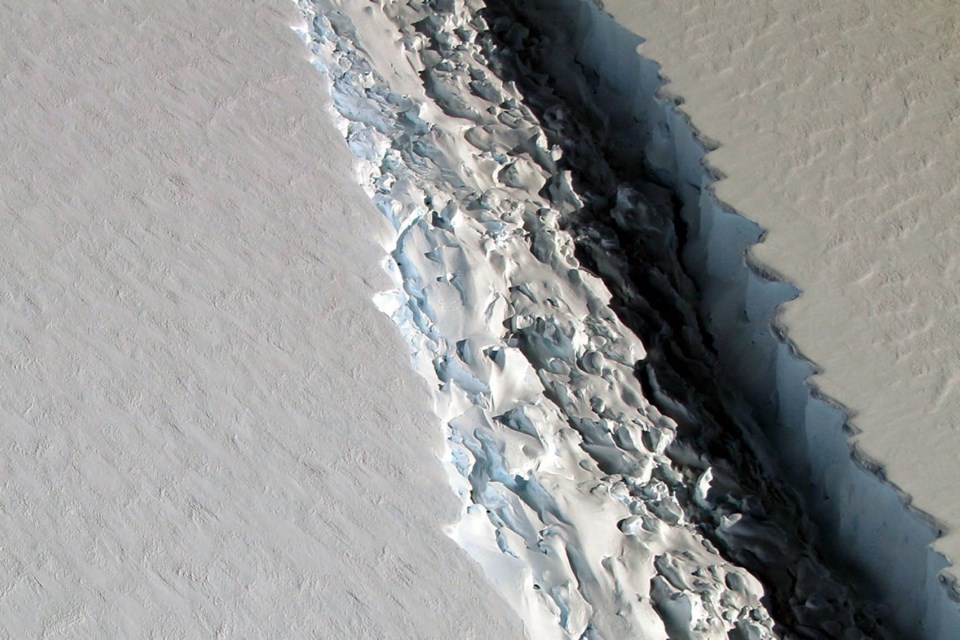A huge crack in an Antarctic ice shelf now has a new second branch, scientists announced this week. Once the crack completely shears off, it will create one of the largest icebergs ever recorded, one that’s larger than the state of Rhode Island.
The main crack in the Larsen C ice shelf is now 177 kilometres long. The iceberg is most likely to break free within the next few months because of the overwhelming weight the 177 km of already separated ice is placing on the 20 km that remains connected to the shelf, said Adrian Luckman of Project MIDAS, a British Antarctic research project that’s keeping watch on the ever-growing crack.
That small 20 km of ice is all that’s keeping the nearly 5,200-square-km piece from floating away, he said.
“While the previous rift tip has not advanced, a new branch of the rift has been initiated,” Luckman said in a statement. “This is approximately six miles [10 kilometres] behind the previous tip, heading toward the ice front.”
This is the first significant change to the crack, also known as a rift, since February. Although the length of the crack has remained steady for several months, it has been steadily widening at rates in excess of three feet per day.
Ice shelves are permanent floating sheets of ice that connect to a land mass, according to the National Snow and Ice Data Center. Studying them is important because they “hold back the glaciers that ‘feed’ them,” Luckman said. “When they disappear, ice can flow faster from the land to the ocean and contribute more quickly to sea-level rise.”
Larsen C is about 335 metres thick and floats on the seas at the edge of West Antarctica, holding back the flow of glaciers that feed into it.
The scientific name for the process of ice breaking off of an ice shelf or glacier is known as “calving.”
“When it calves, the Larsen C ice shelf will lose more than 10 per cent of its area to leave the ice front at its most retreated position ever recorded. This event will fundamentally change the landscape of the Antarctic Peninsula, “ Luckman said.
It’s uncertain whether this expected calving event on Larsen C is an effect of climate change or not, although there is good scientific evidence that climate change has caused thinning of the ice shelf, according to Project Midas.
In the past 50 years, the Antarctic Peninsula has experienced extraordinary warming of more than 4 degrees, the European Space Agency said.



